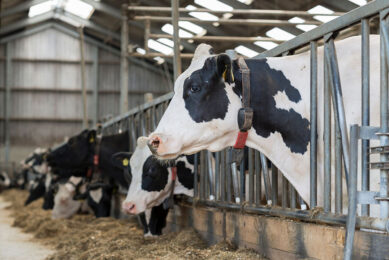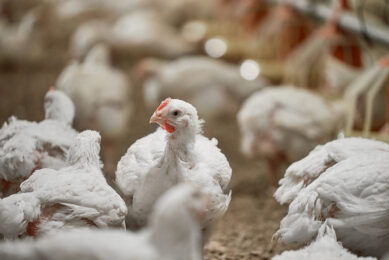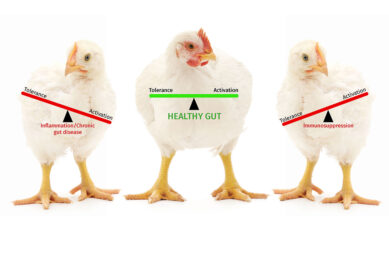Effects of feed additives on rumen fermentation
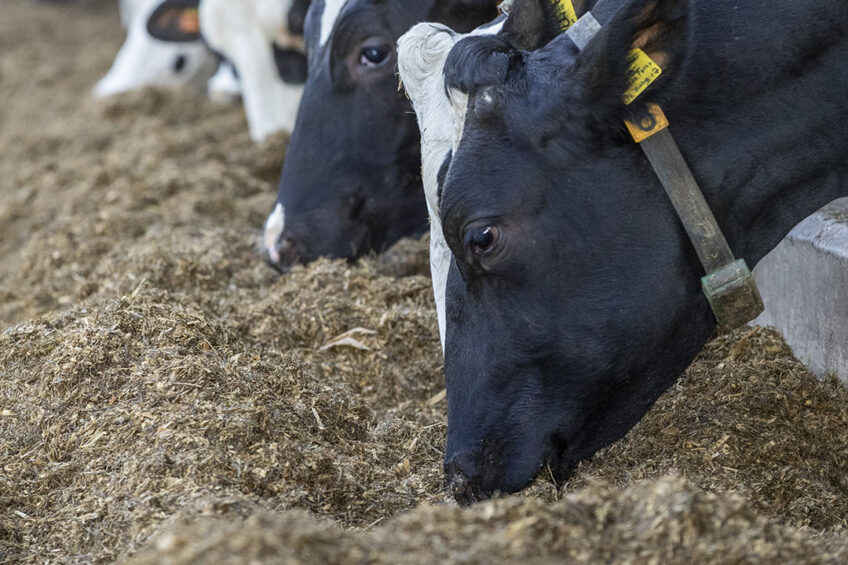
Feed additives can be used in ruminant feeding programmes to manipulate rumen fermentation and direct it favourably. The following is a review of these additives, each of which has a specific role and mode of action in the fermentation process.
Buffers
The addition of sodium bicarbonate to the cow’s diet can increase the rumen volatile fatty acids (VFA) concentration and alter their molar proportion toward a higher proportion of acetate: propionate ratio. In a study with cows fed 75% concentrate diets, the acetate: propionate ratio increased from 1.31 to 2.0 when supplemented with the buffer. The reason for this change in rumen fermentation may be related to a change in the rumen microbial population or a shift in the metabolism of existing microbes toward more acetate and less propionate production. It may also result from the increased rumen fluid dilution rate due to the increased flow of water into the rumen as an attempt to adjust rumen osmolality.
In terms of animal performance, dietary buffer supplementation tends to increase DM intake and nutrient digestibility and hence maintains high productivity in lactating animals. Also, some references have alluded to the use of sodium bicarbonate in the treatment of ketosis. Feeding corn silage with sodium bicarbonate added before feeding produced lower concentrations of ketone bodies in the blood and urine of lactating cows.
Enzymes
For most conventional feeds, the use of exogenous fibrinolytic enzymes did not affect rumen fermentation parameters or animal performance. However, in studies on agro-industrial byproducts such as tomato pomace, almond hulls, and pomegranate peel, the use of a mixture containing xylanase and cellulose enzymes has counteracted the effect of increased levels of tannin and lignin of the cell wall of these materials which inhibit the attachment with the rumen flora. The use of enzymes, in this case, has thus improved rumen fermentation and utilisation of these feed materials with a resulting increase of the average daily gain in beef cattle by 5-20% and increased milk production by 2-15% in dairy cows.
Ionophores
The primary way in which ionophores modify rumen function is by increasing the rumen population of gram-negative bacteria relative to that of gram-positive bacteria which ferment dietary nutrients into ‘less desired’ products such as methane, and ammonia. Therefore, ionophore treatment improves rumen function and animal performance by reducing the production of these metabolites. It was found that rumen methane production can be reduced by up to 30% by using ionophores which inhibit bacteria providing precursors of methane (formate and H2) and froth formation. Ionophores also reduce peptidolysis and amino acid deamination which is mediated by inhibition of gram-positive hyper ammonia producers and hence increases the post-rumen supply of proteins and peptides.
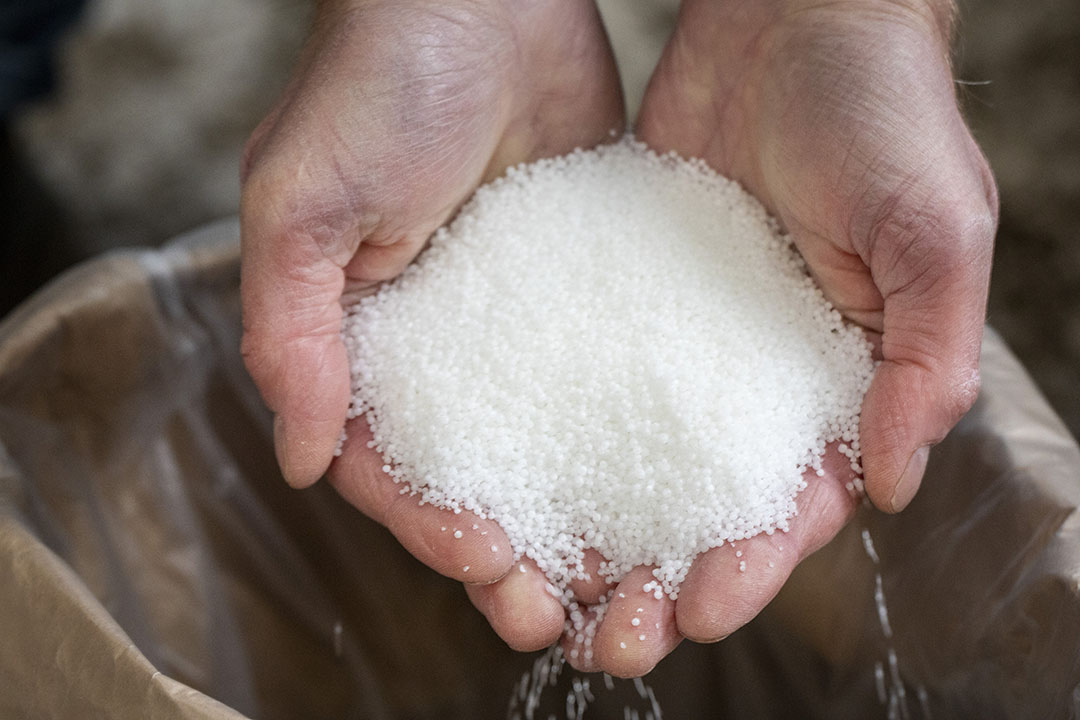
In terms of animal performance, it was found that the addition of ionophores to the diets has resulted in increased milk yield, feed efficiency, and protein yield by about 2%. Further, ionophores are very effective at preventing coccidiosis in livestock. By inhibiting the growth of lactate-producing bacteria such as Streptococcus bovis and Lactobacillus spp, ionophores may reduce the risk of rumen acidosis and bloat. The increased glucose supply resulting from the stimulation of rumen propionate production by ionophores can also reduce the risk of ketosis and fatty liver syndrome in lactating dairy cows. Economically, ionophores have a cost:benefit ratio of 5 to 1 when added to dairy cow diets.
Bee glue
Bee glue can be included in the ruminant diet at 125, 250, or 500 μg/500 mg of dietary dry matter. Most of the literature confirmed better energy utilisation as a result of bee glue supplementation. Improvements in total and/or individual short-chain fatty acids (SCFA) production were also observed in many studies, which confirm the positive effect of different types of bee glue on rumen microbial fermentation. Further, bee glue supplementation reduced the dietary crude protein degradability and ammonia concentration in dairy cows while increasing the intestinal digestibility of crude protein. With bee glue supplementation, there are increased concentrations of total short-chain fatty acids (SCFA) due to a marked increase in acetate, the major contributor to SCFA. This effect was associated with the increase in total tract DM digestibility.
In terms of animal production, the use of bee glue enhanced milk yield, the antioxidant capacity of milk, and the quality of milk fat composition in dairy cows by improving the content of conjugated linoleic acid isomers, and decreasing the n6- to-n3 ratio. Improvement in milk quality and quantity from dams fed with bee glue may be responsible for better performance of newborn ruminants. Also, transfer of the residuals of bee glue active components into the milk may improve the newborn health and immunological status. It was found that newborn Holstein calves fed on 6 L/d of whole milk and 4 mL/d of bee glue for 56 days had improved calf health while reducing the incidence of diarrhoea, medical costs, and interventions for veterinary medicine
Garlic powder
Garlic powder contains numerous active metabolites such as sulphur compounds, enzymes, free amino acids, sterols, steroids, glycosides, flavonoids, phenols, and organic selenium compounds, and is also rich in vitamin B complex and vitamin C. The use of garlic powder at 1% dry matter helps maintain a normal pH of above 6, thus providing an environment favourable for normal rumen fermentation. A reduction of 11% in methane emissions also resulted from feeding garlic powder. It was speculated that the presence of organic sulphur contributed to the growth of anaerobic fungi leading to increased fibre digestibility and hence decreasing methane production. Further, a higher level of rumen ammonia nitrogen was associated with feeding garlic powder. Rumen ammonia nitrogen has been reported to be an important nutrient as it is considered to be the major source of nitrogen for microbial protein synthesis.
In terms of animal health, the sulphur compounds in the garlic powder are used for numerous medicinal properties, such as antimicrobial, antioxidant, and immune-modulatory activities, thus making the powder a suitable alternative to antibiotics and other drugs which are currently prohibited.
References are available from the author upon request




